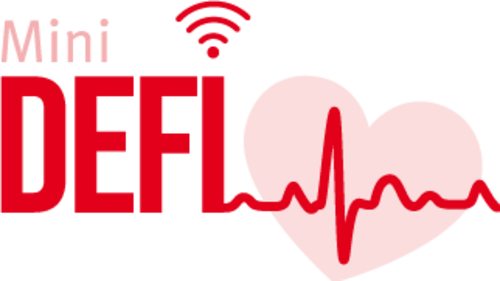MiniDefi Miniaturized defibrillator with telemedical connection
Motivation
In Germany alone, sudden cardiac death causes approximately 80,000 to 100,000 deaths annually. Long-term ECG examinations of patients who have died of sudden cardiac death have shown that ventricular tachycardia and ventricular fibrillation are the most common arrhythmias.
The risk of sudden cardiac death is particularly high in heart failure with severe limitation of the ejection fraction of the left ventricle. However, there are clinical situations where the risk of sudden cardiac death is significantly increased but defibrillator implantation is not yet recommended. These include above all scenarios in which the patient suffers a temporary heart failure in the course of cardiomyopathy, an acute myocardial infarction or acute myocarditis, which can then recover under pharmacological therapy.
Goal
Within the framework of the project applied for, a miniaturized body-portable, automatic, external defibrillator (MiniDefi) is to be developed. This represents a treatment option for high-risk patients who would otherwise have to be monitored in hospital. In an emergency, patients and first aiders can be supported directly on site by telemedical assistance from the approaching ambulance. In addition to acute defibrillation, MiniDefi offers telemedicine monitoring and early detection of life-threatening complications, which provides additional protection in the home environment as well as improved quality of life and a greater sense of safety for patients.
Technologies
- Research of algorithms for emergency detection (fall and seizures) optimized for low-power use in combination with the minimal sensor setup of the MiniDefi and at the same time high reliability.
- Investigate algorithms for preventive detection of health deterioration (ECG artifact cleanup, heart failure assessment, respiratory monitoring). Existing approaches are further researched, in particular focused on the transferability of the sensor setup with regard to miniaturization (other sensors / deviant positioning).
- Standardisation of communication between medical devices worn on the body, the emergency control centre (112) and the clinics involved (emergency hospital to be approached and the patient's hospital providing care) in the style of an IHE profile. The aim is to combine existing standards in order to digitally support the emergency care application of a patient.
- This goes hand in hand with the digital conception of telemedical emergency care (rescue chain) in connection with preventive patient monitoring, so that the new form of care can be integrated as smoothly as possible into everyday working life.
- Technical testing and prototypical implementation of a pay-per-use concept for medical algorithms for use by third-party providers. Decision support or online analysis algorithms could be made available online to other manufacturers and invoiced depending on the intensity of use. This would allow other providers to use rarely used CPR algorithms under license without having to conduct their own research.
Internal Leader
External Leader
Dr. Tobias Tröger (Corscience GmbH & Co. KG)Scientific Director
M. Ahmad, J. Glitza, F. Müller-von-Aschwege, A. Hein and B. Cauchi; Oktober / 2020
Nils Reiss, Thomas Schmidt, Jan-Dirk Hoffmann, Steffen Kunzendorf, Georg Luegmair, Tobias Tröger, Christian Buj, Frerk Müller-von Aschwege; Studies in health technology and informatics; 06 / 2020
www.corscience.de
www.schuechtermann-klinik.de
www.tech2go.de

Duration
End: 30.07.2022
Source of funding

Related projects
Intelligent Healthcare Monitoring based on Semantic Interoperability Platform (sorry - only available in German)


